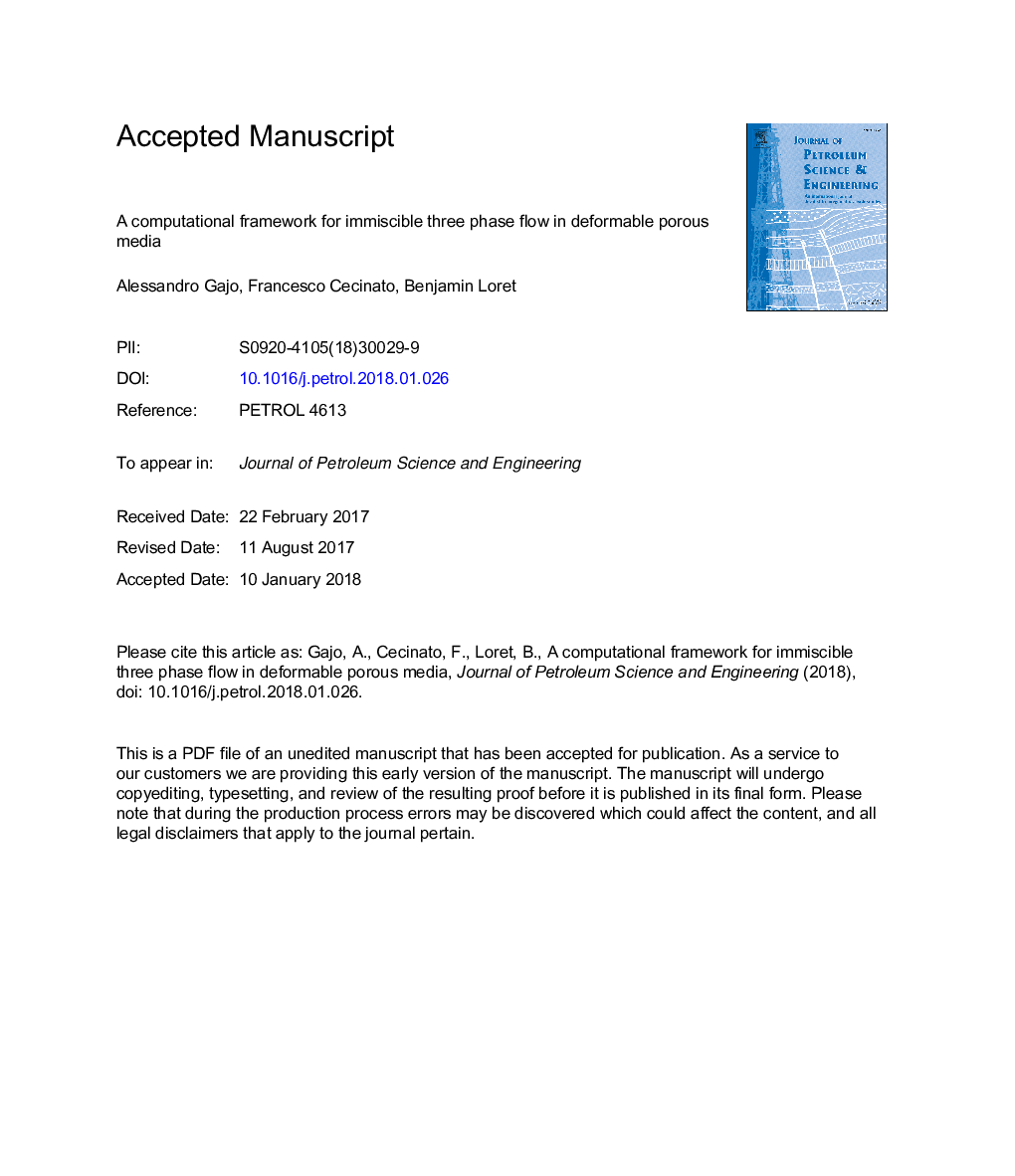| Article ID | Journal | Published Year | Pages | File Type |
|---|---|---|---|---|
| 8125084 | Journal of Petroleum Science and Engineering | 2018 | 33 Pages |
Abstract
Several soil decontamination processes and enhanced oil recovery techniques involve the co-existence of three immiscible fluids, such as water, a nonaqueous phase liquid and a gas. In this work, a computational framework based on the individual mass balance of each phase is developed, aimed at simulating three-phase flow in a deformable rock through the finite element method, without resorting to specific simplifications that are usually required by standard numerical schemes. Key ingredients of the model are: expression of the residual in terms of mass contents, consistent lumping of the storage terms in the residual and algorithmic (tangent) matrix, consistent integration rules, the use of a minimum relative permeability and a time marching scheme based on trapezoidal integration. Special convective boundary conditions are adopted for pressures to be consistent with the assumed rock wettability properties during co-current imbibition. The resulting numerical scheme can deal with arbitrary saturation and/or pressure boundary conditions. The model is tested by simulating gas injection tests, and both co- and counter-current water imbibition tests, in a deformable core. To assess the performance and robustness of the whole framework, sensitivity analyses are performed upon varying key constitutive, loading and numerical parameters.
Related Topics
Physical Sciences and Engineering
Earth and Planetary Sciences
Economic Geology
Authors
Alessandro Gajo, Francesco Cecinato, Benjamin Loret,
